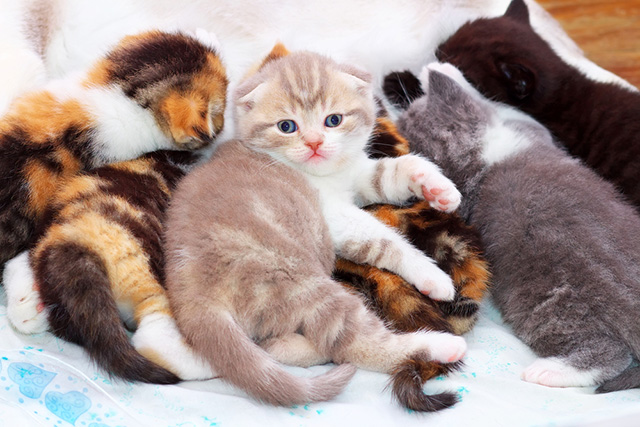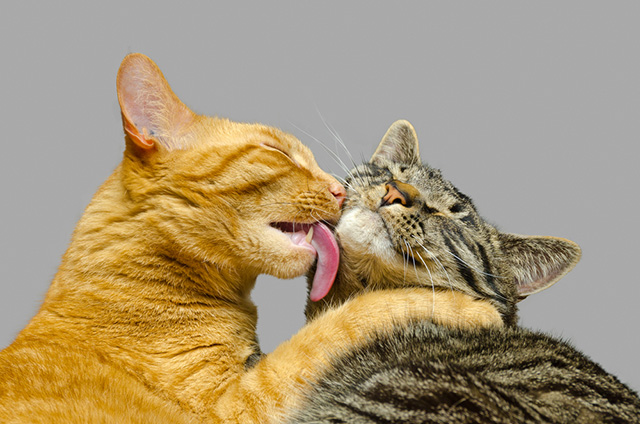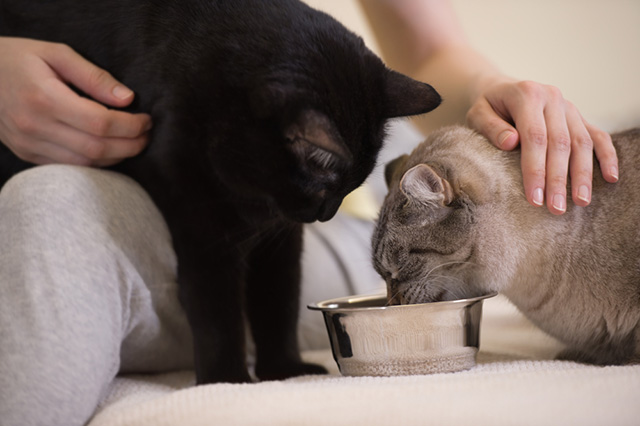Feline leukaemia virus (FeLV) is associated with the occurrence of tumours and anaemia in cats but also causes disease by suppressing the cat’s immune system.
This leaves the cat susceptible to a variety of other problems, which may then be more serious as the cat is unable to combat disease effectively. This is similar to the problems seen in man with the AIDS virus and in cats with Feline Immunodeficiency Virus (FIV).

Is my cat at risk of FeLV?
The FeLV virus cannot survive for long in the environment, so spread of infection between cats is reliant on prolonged close contact. Therefore, infection may be common in environments where there are a large number of cats or where cats go outside and fight. It is estimated that currently 1-2% of cats in this country are infected with FeLV.
In multi-cat households where FeLV is endemic, up to 30% of the cats may be infected. Young cats and particularly kittens are especially vulnerable to becoming infected with FeLV.
As cats get older their susceptibility to infection will decline. Nevertheless, vaccination of older cats is recommended if they are considered ‘at risk’.
How is it FeLV spread?
The FeLV virus is spread mainly via the saliva from a persistently infected cat exchanged, for example, by mutual grooming or sharing of food bowls. In addition, the infection can also be caused by biting or contact with urine and faeces containing the virus.
The virus can also pass from a queen to her kittens either in the womb or after the kittens are born, via infected milk.
The majority of cats become infected with the virus entering the body via the mouth or nose.
The virus multiplies at these sites before spreading through the bloodstream to the rest of the body and, in particular, to the bone marrow.
Not all cats which are exposed to the virus become persistently infected. If the cat is able to eliminate the virus, this will occur during the initial stages (4-12 weeks) of infection. Once significant infection of the bone marrow is present, the cat remains infected for the rest of its life.

Signs and symptoms of FeLV
Signs of FeLV infection can take months or years to develop and so infected cats can appear to be totally normal and healthy for quite some time. The first signs of infection may be vague and non-specific because of the huge variety of problems that can occur with FeLV infection. The cat may appear to be slow to recover from minor infections, may be off-colour and have a poor appetite over a period of time or may develop chronic or recurring problems such as diarrhoea.
If tumours develop, the signs seen will depend on the site of the tumour and a variety of different sites may become infected like the chest, kidneys, gut and spinal cord. As the bone marrow is affected the cats ability to produce red blood cells, which carry oxygen around the body, decreases and an anaemia ensues, this results in pale gums and listlessness due to the lack of oxygen.

How is FeLV treated?
There is no treatment to eliminate a FeLV infection, although interferons are now being used in an attempt to eliminate disease in some cases. Treatment must therefore be aimed at maintaining quality of life and managing the effects of infection such as immunosuppression, anaemia and cancer.
How do I prevent my cat getting FeLV?
There are several vaccines on the market to protect your cat against FeLV. Vaccination helps to prevent cats from becoming persistently infected by helping to stimulate a successful immune response.
Unfortunately, no vaccine is likely to be 100% effective at protecting against infection. Vaccination is recommended in situations where cats have a risk of exposure to the virus. This includes cats that go outdoors and all those in contact with potentially infected individuals.
